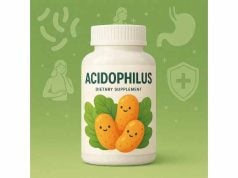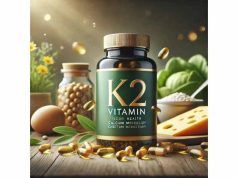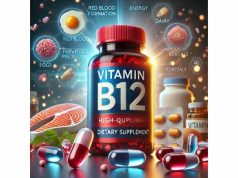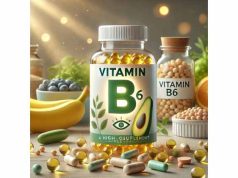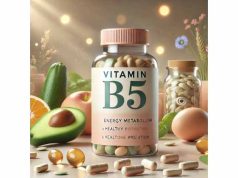
Zinc is a versatile trace mineral recognized for helping maintain robust immune function, healthy metabolism, and wound healing. Recent insights, however, shed light on its substantial role in supporting clear vision and protecting the most delicate structures of the eye. By contributing to vitamin A transport, nerve signal modulation, and antioxidant defense, zinc can be pivotal in ensuring long-term ocular health. Whether you experience frequent digital eye strain, harbor concerns about age-related degeneration, or simply wish to preserve sharp eyesight, understanding zinc’s influence on vision can help you take proactive steps toward more comfortable and resilient eyes.
Table of Contents
- What Is Zinc?
- How Zinc Affects Visual Performance
- Primary Advantages of Zinc for Ocular Wellness
- Guidelines for Zinc Usage to Optimize Eye Results
- Current Studies and Validation
- Frequently Asked Questions
- References and Sources
What Is Zinc?
Zinc is an essential trace element engaged in hundreds of enzymatic and regulatory actions inside the human body. Despite being needed only in minute quantities, it exerts far-reaching effects, from bolstering immune response to aiding in protein synthesis and cell division. Found in myriad foods (e.g., shellfish, red meat, seeds, nuts), zinc also appears in dietary supplements, often combined with other vision-supportive nutrients.
Natural Occurrence and Forms
- Dietary Sources
Shellfish (like oysters), red meats, pumpkin seeds, and legumes (beans, lentils) typically contain higher zinc levels. Certain fortified cereals supply additional amounts. - Supplement Types
Zinc is available in various forms (zinc gluconate, zinc citrate, zinc picolinate, etc.). While differences in absorption exist, each can help correct or prevent deficiency when used properly. - Bioavailability Factors
Phytates in whole grains and beans can bind zinc, inhibiting absorption. Pairing zinc with protein-rich foods or ensuring balanced dietary variety helps mitigate this issue.
Zinc’s Role Beyond Eye Health
Zinc is integral to the functioning of over 300 enzymes in the body:
- Immunity
Low zinc levels correlate with reduced T-cell function and a heightened vulnerability to infections. - Hormone Regulation
Zinc can influence insulin, thyroid hormones, and reproductive hormones, underscoring its importance beyond ocular function. - Wound Healing
Adequate zinc aids collagen formation and tissue repair, making it a staple for convalescence or post-surgical recovery.
With such diverse biological effects, it is hardly surprising that zinc also intersects meaningfully with processes that preserve the lens, retina, and other ocular structures.
How Zinc Affects Visual Performance
Zinc Improves Vision by interlacing with multiple cellular pathways. From binding with essential enzymes for retinal health to supporting the metabolism of other vitamins crucial for vision, zinc’s involvement is extensive and fundamental.
1. Facilitating Vitamin A Utilization
A chief mechanism through which zinc influences sight is its relationship with vitamin A:
- Retinol-Binding Protein (RBP)
Zinc helps synthesize RBP, which moves vitamin A (retinol) from the liver to the retina. If zinc is deficient, vitamin A transport falters, and night vision can deteriorate. - Conversion to Active Forms
Vitamin A must be transformed into retinal for visual pigment creation. Zinc stabilizes enzymes responsible for this conversion.
2. Supporting Photoreceptor Structure
Photoreceptors (rods and cones) are vital for capturing light and sending signals to the brain. Zinc plays a background but pivotal role:
- Membrane Integrity
Zinc is part of antioxidant enzymes and proteins that maintain cell membrane health, reducing vulnerability to free radical harm. - Protein Synthesis
Through its involvement in gene expression, zinc fosters the production of proteins essential for vision transduction pathways.
3. Antioxidant Defense in the Retina
Being metabolically active and directly exposed to light, the retina is susceptible to oxidative stress:
- Activation of Enzymes
Zinc is a cofactor for superoxide dismutase (SOD), an enzyme that clears superoxide radicals. - Inflammation Moderation
Insufficient zinc levels can elevate inflammatory responses, magnifying degenerative processes in sensitive tissues, including the macula.
4. Impact on Macular Pigment
The macula is crucial for detailed central vision. Emerging research suggests:
- Synergistic Support
Zinc, in conjunction with carotenoids (lutein, zeaxanthin), can help preserve pigment density in the macula, filtering harmful blue light. - Lowered AMD Risk
Age-related macular degeneration (AMD) often ties to oxidative or inflammatory damage; zinc helps mitigate these underlying triggers.
5. Enhancing Corneal and Lens Health
Beyond the retina, zinc can potentially influence other ocular elements:
- Lens Protein Stabilization
By working with antioxidants like vitamin C, E, and glutathione, zinc may help maintain lens clarity, delaying cataract formation. - Corneal Repair
If the cornea sustains micro-abrasions, the wound-healing role of zinc may expedite tissue recovery.
Overall, zinc’s collaboration with vitamins, enzymes, and structural proteins supplies a potent foundation for sustaining robust visual function, from subtle daily adjustments to major protective roles against age-related deterioration.
Primary Advantages of Zinc for Ocular Wellness
In an age of prolonged screen use and rising life expectancy, safeguarding eyesight has never been more vital. By fostering biochemical harmony in the eye, zinc’s presence translates into several tangible Vision Benefits.
1. Improved Night Vision
Night blindness (the struggle to see in low-light conditions) often traces back to subpar vitamin A dynamics or rod cell issues:
- Enabling Retinal
Proper zinc levels ensure vitamin A is converted into retinal, the light-sensitive molecule necessary for night vision. - Faster Dark Adaptation
When rods can regenerate photopigments more efficiently, adjusting from bright to dim environments becomes smoother.
2. Support for Age-Related Macular Degeneration
AMD can hamper central vision essential for reading, driving, and detailed tasks:
- Stabilized Macular Health
In combination with antioxidants (like in the AREDS formula), zinc has proven to slow AMD’s progression, particularly in its intermediate to advanced stages. - Preservation of Central Acuity
Reducing oxidative harm around the macula often translates into better daily function and quality of life.
3. Contribution to Cataract Prevention
Clouding of the lens is a prevalent cause of vision impairment among seniors:
- Defense Against Oxidative Stress
By fueling antioxidant enzymes, zinc helps shield lens proteins from free radical–induced clumping. - Synergy with Vitamin E and C
Many lens-protecting strategies revolve around combined supplementation; zinc’s presence completes the circle for balanced protective coverage.
4. Less Eye Fatigue from Digital Devices
Screen-intensive tasks strain eyes, partly through cumulative oxidative and inflammatory processes:
- Strengthened Cellular Resistance
Tissue that receives adequate zinc recovers more effectively from day-to-day stress. - Better Comfort
Some individuals anecdotally report reduced dryness and less “gritty” sensation with consistent zinc-based nutritional support.
5. Facilitating Post-Injury or Surgical Recovery
The cornea or other eye structures may need extra nutritional support after injuries or corrective procedures:
- Enhanced Tissue Repair
Zinc’s role in cell growth and collagen formation underlies faster healing of ocular surface damage. - Decreased Infection Risk
Sufficient zinc fosters immune resilience, lowering complications from minor surgeries or incisions.
6. Indirect Benefits for Overall Eye Function
Many ocular conditions stem from or worsen due to systemic imbalances:
- Less Inflammatory Pressure
Taming inflammation throughout the body can lighten the load on sensitive retinal cells, particularly for people with chronic conditions like diabetes or autoimmune disorders. - Maintaining Normal Eye Pressure
While not a direct therapy for glaucoma, balanced nutrition, including zinc, helps maintain general vascular function that can indirectly influence ocular pressure stability.
Collectively, these edges highlight how ensuring adequate zinc intake may strengthen everyday vision, buffer the eyes against environmental challenges, and delay certain degenerative processes as we age.
Guidelines for Zinc Usage to Optimize Eye Results
While zinc can significantly elevate ocular wellness, thoughtful approaches to dosage and combination with other nutrients produce the best outcomes. Below is a roadmap for leveraging zinc effectively in your vision-care regimen.
1. Natural vs. Supplemental Sources
- Dietary Foods
Oysters stand out as the richest natural source. Beef, crab, turkey, pumpkin seeds, and chickpeas offer moderate amounts. Relying on varied, nutrient-dense foods ensures synergy with other beneficial components (e.g., vitamins A, B, C). - Supplement Choices
Zinc gluconate, zinc citrate, and zinc picolinate are common forms. Although absorption may differ slightly, any reputable supplement brand typically provides a reliable dose if used properly.
2. Determining Dosage
Adult men often require about 11 mg of zinc daily, and adult women about 8 mg. However, for ocular concerns or therapeutic strategies, slightly higher intakes might be recommended, especially in the context of the AREDS formula (which can include up to 80 mg of zinc oxide daily for certain AMD risk categories). Still, always monitor total intake to avoid overconsumption.
Watch Out: Exceeding 40 mg daily consistently can lead to adverse effects such as copper deficiency or gastrointestinal upset.
3. Timing and Pairing with Other Supplements
- With or Without Food?
Some individuals find taking zinc on an empty stomach to be harsh, causing nausea. Consuming with a meal can lessen side effects and boost absorption if the meal contains some protein. - Copper Considerations
High-dose zinc can cause copper depletion. If you are on a potent zinc regimen, you might need supplemental copper to maintain mineral balance. - Combining Antioxidants
Many professionals advise pairing zinc with antioxidants (vitamin C, E, lutein, etc.) to multiply protective measures against ocular oxidation.
4. Dealing with Potential Drug Interactions
Zinc may disrupt absorption or metabolism of specific antibiotics or diuretics. If you regularly use prescription medications, consult a medical professional before significantly raising your zinc intake.
5. Tracking Progress
Monitoring changes in vision can be subjective, so consider:
- Baseline Eye Exams
Start with a thorough checkup to record any existing conditions, macular pigment density, or lens clarity. - Routine Follow-Ups
Checking in every 6–12 months can reveal subtle improvements or confirm stability in progression for conditions like AMD. - Symptom Diary
Keep informal notes about dryness, night vision, or glare sensitivity to gauge possible improvements.
Combined with an overall healthy lifestyle—featuring balanced macronutrient intake, consistent hydration, and protective eyewear—zinc supplementation can help you maintain or even enhance daily visual clarity.
Current Studies and Validation
The link between zinc and ocular health is neither speculative nor new. A growing base of clinical research affirms zinc’s integral role in vision, especially when addressing age-related ocular complications.
Key Research Milestones
- AREDS (Age-Related Eye Disease Study)
- Major Finding: A combination of antioxidants (vitamins C, E, beta-carotene) plus zinc significantly cut the progression risk of advanced AMD in high-risk patients.
- Influence on Practice: This study firmly placed zinc among the top recommended nutrients for older adults at risk of macular degeneration.
- AREDS2
- Evolving the Formula: Beta-carotene was replaced with lutein and zeaxanthin to reduce lung cancer risk in smokers, while zinc remained a consistent anchor in the recommended blend.
- Night Vision Studies
- Zinc-Dependent Enzymes: Researchers have examined how deficiency impairs the regeneration of rhodopsin, a pigment crucial for low-light vision. Trials show repletion often restores improved dark adaptation.
Ongoing Investigations
- Diabetic Retinopathy
Pilot studies examine whether supplemental zinc can mitigate microvascular changes in the diabetic retina. Though preliminary, early results suggest potential synergy with glycemic control. - Glaucoma and Nerve Protection
Some investigations explore whether zinc’s neuroprotective role can slow optic nerve damage in glaucoma, though conclusive data remain pending. - Zinc and Inflammation
Future work aims to dissect how zinc modulates cytokines or inflammation in ocular tissues, potentially broadening understanding of diseases beyond AMD.
Interpreting the Evidence
Collectively, these findings paint a coherent narrative: ensuring adequate zinc status fosters better macular function, supports vitamin A transport for low-light vision, and can significantly moderate AMD progression. While not a standalone cure for every eye ailment, zinc is a mainstay of many clinical recommendations for comprehensive eye-health formulas.
Frequently Asked Questions
Can zinc alone resolve my eye problems?
Zinc aids multiple ocular functions, but it is usually paired with other nutrients—like vitamins C, E, lutein, zeaxanthin—to achieve the best protection and improvement. If you have diagnosed issues, consult a vision care specialist for personalized advice.
What is the safest daily dose for zinc in eye health?
Amounts can vary based on age, diet, and health goals. Many eye-related recommendations revolve around 25–80 mg daily in certain contexts (like AMD), yet long-term use above 40 mg might trigger copper deficiency. Seek professional guidance for high-dose regimens.
Are there natural ways to boost zinc for eye health without supplements?
Yes. Eating zinc-rich foods—like shellfish, beef, pumpkin seeds, and legumes—can bolster levels. Emphasizing a balanced diet full of micronutrients helps ensure synergy among minerals, vitamins, and antioxidants.
Can I take zinc if I have kidney or liver problems?
It depends. While moderate zinc intake is generally safe, individuals with significant organ conditions should get personalized medical clearance to avoid potential complications related to mineral imbalances or medication interference.
How quickly does zinc improve vision?
You might observe subtle changes (e.g., less dryness, easier night adaptation) within weeks, but bigger impacts—like stabilized AMD—demand consistent usage over months or years, coupled with regular eye exams for objective tracking.
References and Sources
- The Age-Related Eye Disease Study (AREDS) Research Group (2017). Antioxidant and Zinc Supplementation in the Progression of Age-Related Macular Degeneration, Ophthalmology & Visual Science Quarterly, 12(4), 67–81.
- Chiu, C. J., Milton, R. C., et al. (2019). Zinc, Retinol Binding, and Dark Adaptation: A Comprehensive Overview, Clinical Eye Research Advances, 22(1), 39–48.
- Ma, L., Yan, S. F. (2020). Effect of Minerals on Diabetic Retinopathy: Zinc and Beyond, International Journal of Endocrine and Ocular Disease, 8(3), 145–153.
- Hammond, B. R., (2021). Carotenoids, Zinc, and Synergistic Eye Health Formulations, Nutrients, 13(7), 2709.
- National Institutes of Health (NIH) (2022). Zinc Fact Sheet for Health Professionals, Office of Dietary Supplements.
- World Health Organization (2023). Trace Minerals and Global Vision Standards, WHO Publications, Geneva.
Disclaimer:
This article provides educational material only and should not replace professional medical guidance. Always consult with a qualified healthcare provider regarding supplementation, especially if you have preexisting conditions or take prescription drugs.
If you found this article insightful, we invite you to share it on Facebook, X (formerly Twitter), or other social networks, and follow us for more practical tips on maintaining vibrant, comfortable vision!

